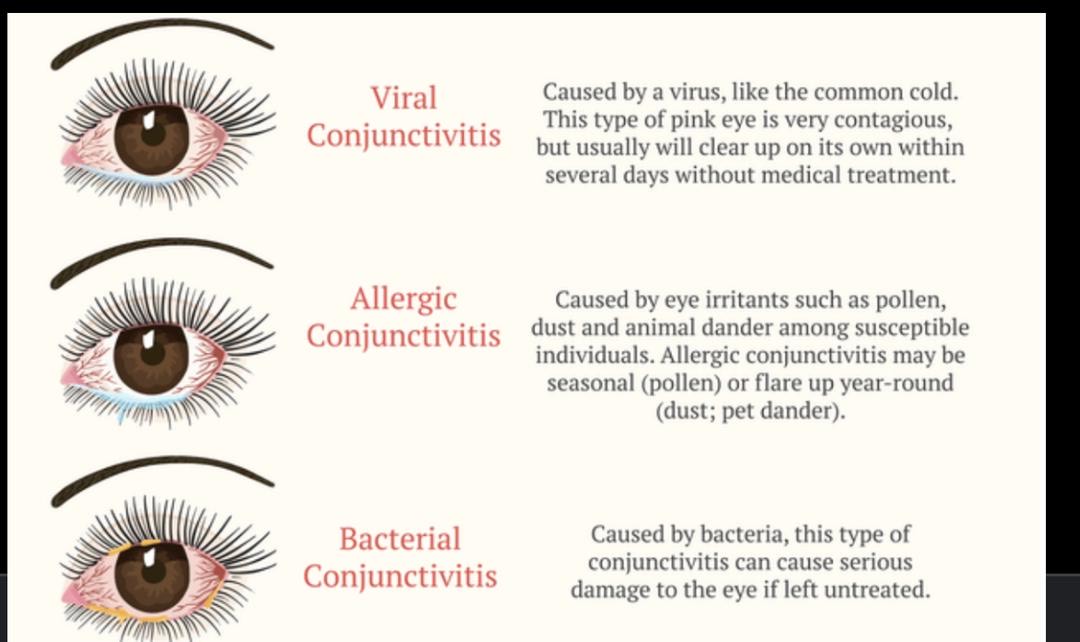
Conjunctivitis, commonly known as “pink eye,” is an infection or swelling in your conjunctiva, which is a thin, transparent membrane that lies over the inner surface of the eyelid and covers the white part of your eye. When you have pink eye, blood vessels in your conjunctiva becomes inflamed.
The conjunctiva becomes irritated by an infection or allergies, your eyes are red and swollen (inflamed), and sometimes they have a sticky discharge.
You can have conjunctivitis in one or both eyes and some types of pink eye are very contagious (easily spread from person to person).

Symptoms of pink eye
Different types of pink eye can come with slightly different symptoms, but in general, it’s important to talk with a doctor if you start to experience:
- Pink or red-toned eyes.
- A gritty feeling in your eyes.
- Watery, ropy or thick discharge that builds up on your eyes at night.
- Itchiness in your eyes.
- Abnormal amount of tears.
Types and causes of pink eye.
In general, there are three main categories of pink eye:
- Infectious
- Allergic
- Chemical
- INFECTIOUS CONJUNCTIVITIS
Infectious pink eye comes in a few different types, including:
- Bacterial conjunctivitis
Bacterial pink eye is caused by staphylococcal or streptococcal bacteria. It typically occurs due to things like touching your eyes with unclean hands, sharing makeup, or having physical contact with someone who may also have conjunctivitis.
- Viral conjunctivitis
Viral pink eye is usually caused by common cold viruses. It can occur if someone with an upper respiratory infection coughs or sneezes close to you. It can also occur when you have a cold virus yourself and blow your nose too hard. This can push the infection from your respiratory system to your eyes.
- ALLERGIC CONJUNCTIVITIS
Most people with allergic pink eye have seasonal allergies. They can get pink eye if they come in contact with a substance they’re allergic to, like pollen, dust etc.
It’s also possible to develop an allergic type of pink eye called giant papillary conjunctivitis if you wear hard contact lenses, or soft contact lenses that aren’t replaced frequently enough. Antihistamines can be used to treat this type of conjunctivitis.
- CHEMICAL CONJUNCTIVITIS
You can get pink eye from irritants such as:
- Chlorine in pools
- Air pollution
- Exposure to other chemicals.
